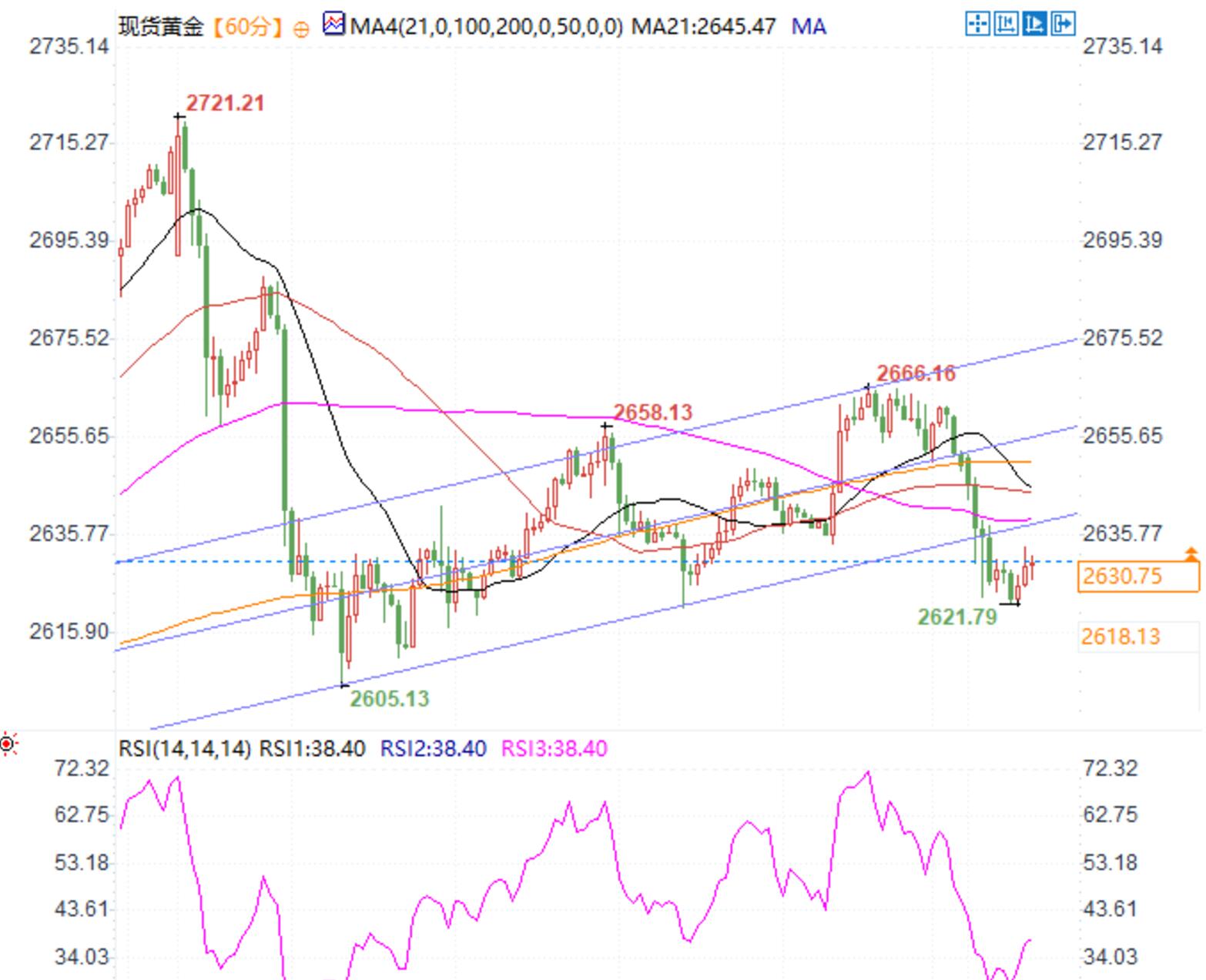Gold's four consecutive gains come to an end! Will gold prices continue to decline as the US dollar rebounds and US bond yields rise together?
Spot gold fell under pressure on Monday (December 2), with prices trading at $2629.15 per ounce, down 0.80% for the day, ending the previous four-day uptrend. Under the dual pressure of the strengthening of the US dollar and the rebound of US bond yields, gold prices have entered an adjustment range, and the market is paying attention to further changes in the trend that may be triggered by the release of US macroeconomic data this week.
The linkage between the US dollar and US bond yields suppresses gold demand
The downward pressure on gold prices mainly comes from the driving force of the rebound of the US dollar. Previously, due to the rise in US bond yields, the US dollar index rebounded from a near three week low, putting significant pressure on the safe haven asset gold. The market increasingly expects the new US government to adopt more inflationary policies, especially as tariff rhetoric intensifies concerns about cost push inflation.
Renowned analysts point out that investors are reassessing the possibility of the Federal Reserve cutting interest rates in the future, and high inflation expectations may limit its monetary easing space. With the rising yield of US treasury bond bonds, the attraction of gold as a non yielding asset is restrained. This trend was particularly evident in early week trading, and the weak trend in gold prices confirms this logic.
Geopolitical tensions provide partial support
Despite the overall weakness of gold, the persistent geopolitical risks provide some support for the price of gold. The market is still paying attention to the situation between Russia and Ukraine, as well as the turmoil in the Middle East, and investors remain cautious about this. At the same time, the uncertainty of international trade relations, especially the potential challenge to the position of the US dollar in the global trading system, has further increased market risk aversion.
However, these risk factors are not yet sufficient to reverse the systemic pressure exerted on gold prices by the strengthening of the US dollar and the rise in US Treasury yields. Traders are generally adopting a wait-and-see attitude, waiting for key economic data such as the upcoming US manufacturing PMI, which may provide further clues to the future policy path of the Federal Reserve for the market.
Technical signals point to short-term pullback
From a technical perspective, the price of gold has fallen below the lower edge of the short-term downward channel, strengthening the market's expectations for subsequent market adjustments. Analysis suggests that if spot gold continues to fall below the key support level of $2625 per ounce, it may further drop to around $2605, which briefly provided support last week. Furthermore, if it falls below the $2600/ounce mark, it may test the support of $2575 near the 100 day moving average.
On the other hand, in terms of upward resistance, if gold prices return to the $2642-2643 range, this level may serve as a significant short-term resistance. Further breakthroughs will challenge $2652 and even move towards the integer level of $2700. However, current market conditions indicate that the upward potential of gold prices may be limited by the strength of the US dollar and macroeconomic conditions.

Outlook: Coexistence of short-term pressure and long-term bullish logic
In the short term, gold prices may continue to be under pressure. The strength of the US dollar rebound and changes in Federal Reserve policy expectations will be the core factors driving the direction of gold prices. The release of important economic data in the United States this week, including the ISM manufacturing PMI and other employment and inflation related data, may bring short-term fluctuations to gold prices.
From a long-term logic perspective, gold still holds appeal, especially against the backdrop of ongoing geopolitical risks, slowing global economic growth, and adjustments in central bank foreign exchange reserve strategies. However, current market conditions indicate that gold prices still face competitive pressure from a strong US dollar and rising yields.
Overall, the gold market is expected to exhibit cautious and complex characteristics this week. Investors need to closely monitor the Federal Reserve's policy signals and changes in the global macro situation, which will provide key guidance for the gold price trend in the coming weeks.
Tips:This page came from Internet, which is not standing for FXCUE opinions of this website.
Statement:Contact us if the content violates the law or your rights
